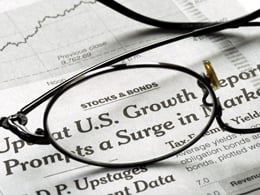 Last night, I gave a talk to a group of clients about the strengthening U.S. economic recovery. Interestingly, most of the questions focused on the rest of the world and the risks we face as a result of serious economic issues elsewhere.
Last night, I gave a talk to a group of clients about the strengthening U.S. economic recovery. Interestingly, most of the questions focused on the rest of the world and the risks we face as a result of serious economic issues elsewhere.
A look around the world
To simplify things, let’s consider the world as four major economic powers: the U.S., Europe, Japan, and China. In aggregate, of course, smaller countries also count, but the four big ones will dominate the world economy for the foreseeable future. Of these major players, only the U.S. is on a positive economic trajectory.
Both Japan and Europe represent significant downside risks for the world economy. Europe continues to grow slowly, at best, and suffers from rising political issues, even as its economic picture deteriorates and debts continue to mount. The other day, Japan launched what looked like a Hail Mary pass, dialing up its quantitative easing program and forcing its currency value down. Japan is getting desperate, and frankly, it’s running out of options; its debt and deficit picture is even worse than Europe’s.
What about China? Chinese growth continues, at a slowing pace but still much faster than anywhere else in the world, including the U.S. This is expected to continue—and it had better, because the Chinese debt situation has worsened over the past couple of years to the point that China is now broadly in the same position as the U.S. debt-wise.
Unlike the U.S., however, China is largely dependent on the rest of the world to grow, as its economy still relies on exports and on government spending (which is what has run up the debt). Both of those growth engines are running out of track, and it remains to be seen whether the Chinese government will be able to shift to a consumption growth model.
The U.S. is sitting pretty, relatively speaking
Unlike the rest of the world, the U.S. has a much more self-contained economy and is much less dependent on exports as an engine of growth. Over the past several years, exports have added about 1 percent to economic growth, while imports have subtracted the same amount, for a net effect on growth of between +/−2 percent per year and averaging out to around zero for the period.
Given this small effect on the economy as a whole, what would the potential damage be to U.S. growth in the event of a worldwide economic crisis? In this case, we have data to refer to, from 2008 and afterward. The results were actually positive for the first couple of years but turned negative for three quarters in 2010, with losses in growth of between 1 percent and 2 percent. In the grand scheme of things, this was minor, and it certainly paled in comparison with the domestic economic damage.
We have no reason to expect that any damage would be worse this time. In fact, it probably wouldn’t be as bad. We’re simply more prepared, and the U.S. economy itself is better grounded, than in 2008.
In the end, imports and exports aren’t large enough, on a net basis, to significantly disrupt the U.S. economy on their own. Even as other economies slow, the strengthening U.S. economic recovery makes us that much more able to weather any storm. Risks remain, but slow growth and recession in other parts of the world shouldn’t concern us too much.
I’ll talk about what should be worrying us in tomorrow’s post.


 Print
Print


